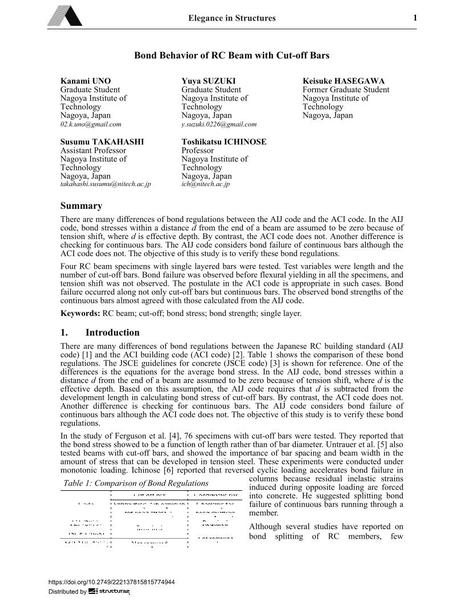Bond Behavior of RC Beam with Cut-off Bars

|
|
|||||||||||
Détails bibliographiques
| Auteur(s): |
Kanami Uno
Yuya Suzuki Keisuke Hasegawa Susumu Takahashi Toshikatsu Ichinose |
||||
|---|---|---|---|---|---|
| Médium: | papier de conférence | ||||
| Langue(s): | anglais | ||||
| Conférence: | IABSE Conference: Elegance in structures, Nara, Japan, 13-15 May 2015 | ||||
| Publié dans: | IABSE Conference Nara 2015 | ||||
|
|||||
| Page(s): | 276-277 | ||||
| Nombre total de pages (du PDF): | 8 | ||||
| Année: | 2015 | ||||
| DOI: | 10.2749/222137815815774944 | ||||
| Abstrait: |
There are many differences of bond regulations between the AIJ code and the ACI code. In the AIJ code, bond stresses within a distance d from the end of a beam are assumed to be zero because of tension shift, where d is effective depth. By contrast, the ACI code does not. Another difference is checking for continuous bars. The AIJ code considers bond failure of continuous bars although the ACI code does not. The objective of this study is to verify these bond regulations. Four RC beam specimens with single layered bars were tested. Test variables were length and the number of cut-off bars. Bond failure was observed before flexural yielding in all the specimens, and tension shift was not observed. The postulate in the ACI code is appropriate in such cases. Bond failure occurred along not only cut-off bars but continuous bars. The observed bond strengths of the continuous bars almost agreed with those calculated from the AIJ code. |
||||
